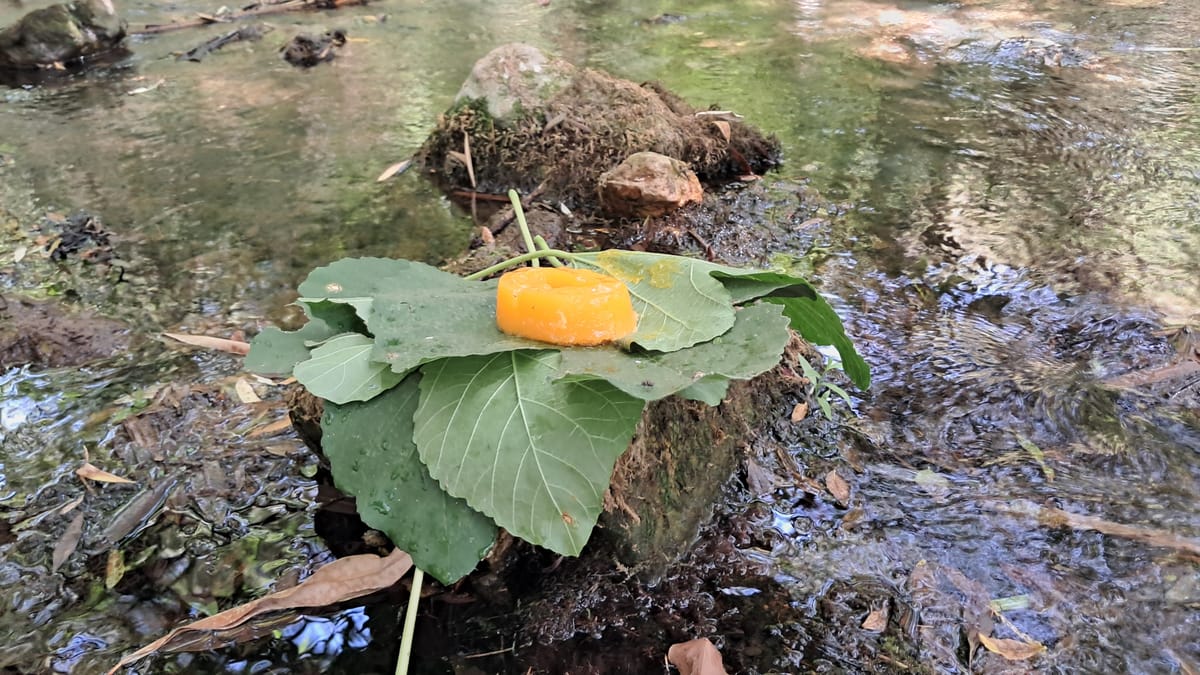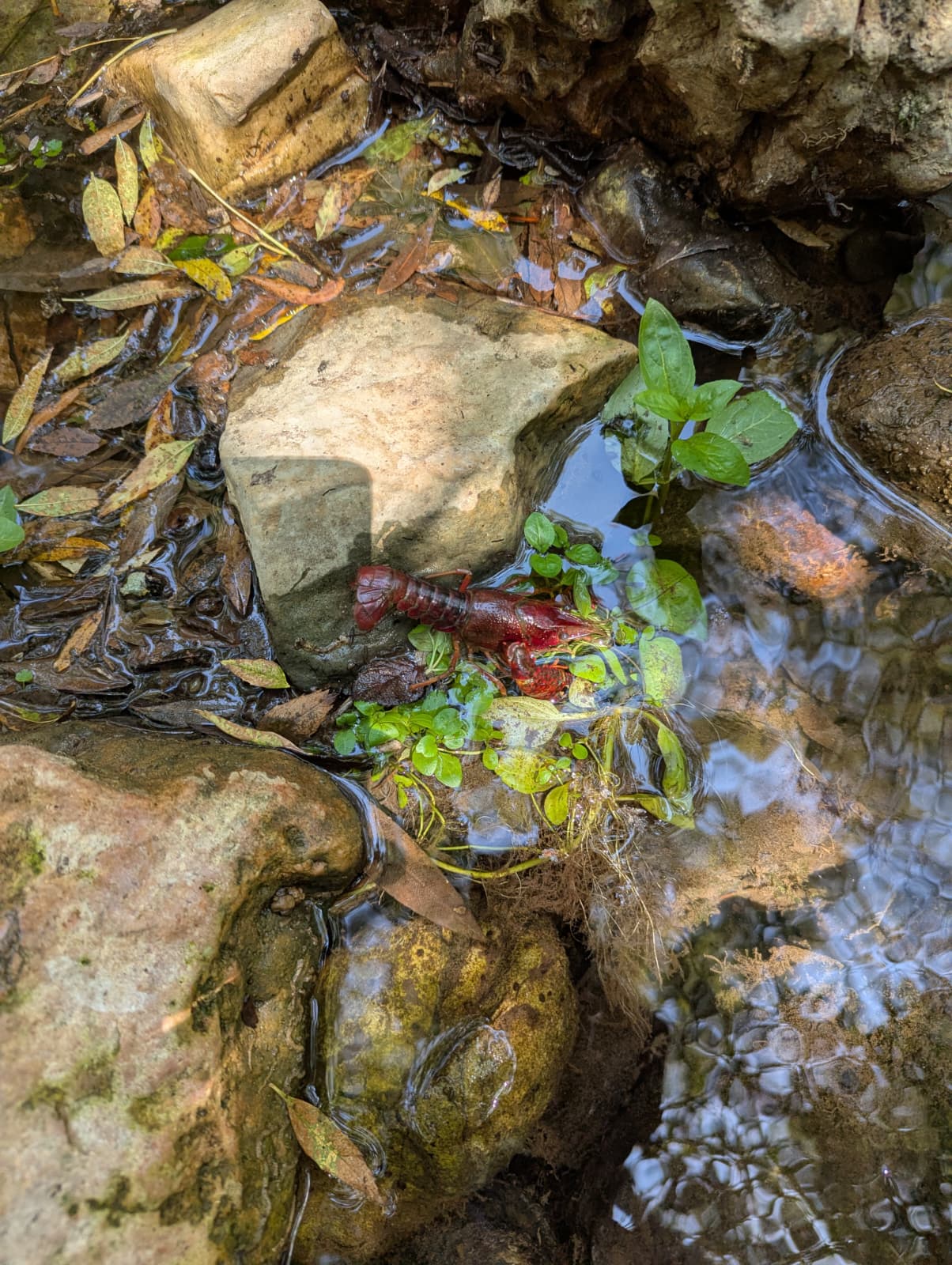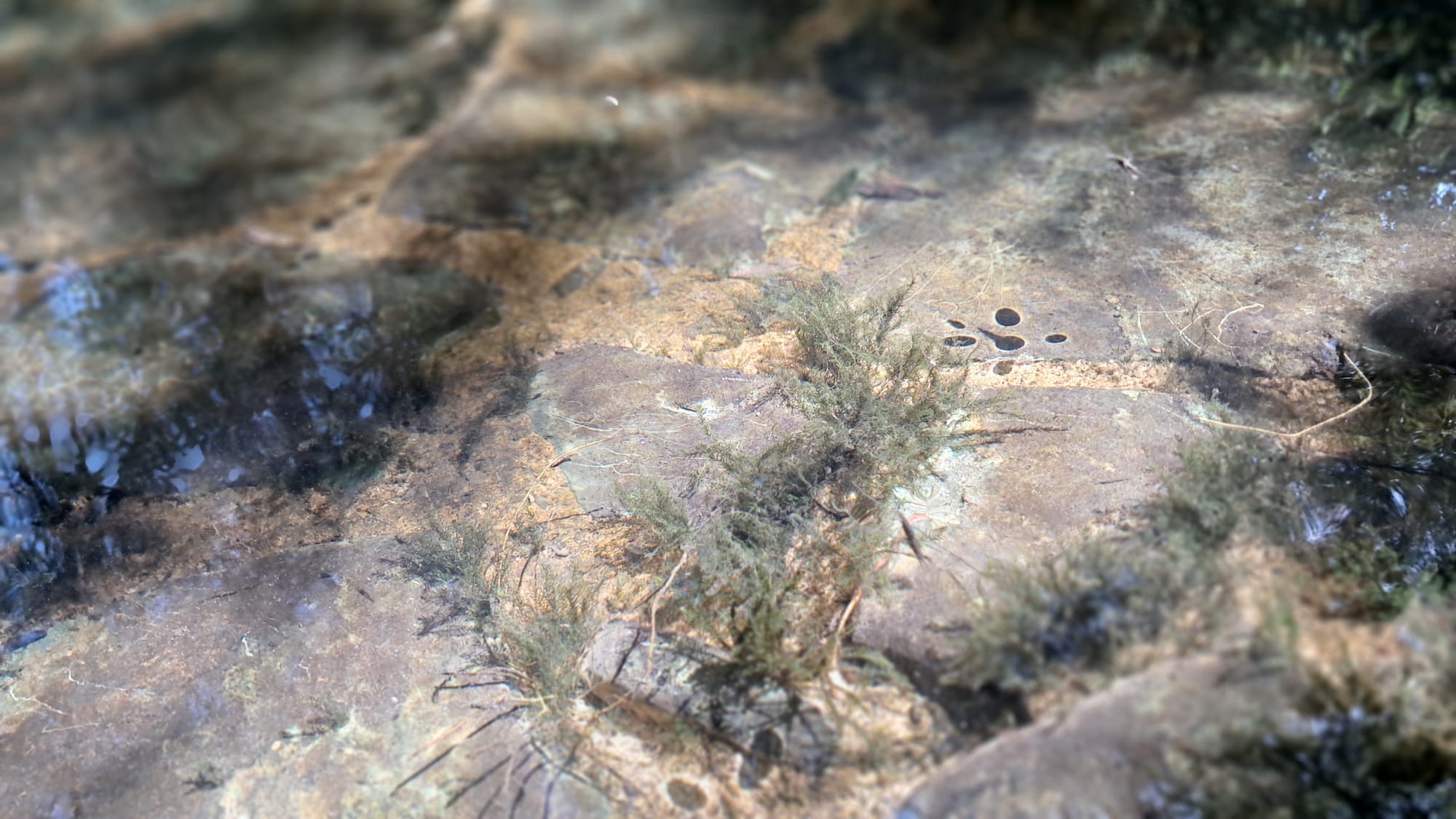An offering at an oasis in southern Portugal
On a full moon, a visitor to the healing waters in Loulé left an oferenda that surprised and delighted.

We saw the woman who left this offering of pudim (pudding). She was kind, bending down prickly branches to help my five year-old pass through the brush. I saw her collecting fig leaves, but didn't think much of it. After all, we were spending the 40°C+ day under the cover at Fonte Benémola, picking just-ripe blackberries and dipping in the fresh, healing waters that surge from an ancient aquifer below. It's the kind of place people come to relax, so we kept to ourselves.
In stark contrast to crowded beaches and water parks that make the Algarve famous or infamous depending on your point of view, the highland area of the barrocal offers another perspective on this historic, southern region. Stretching from north of Tavira in the east to just north of Lagos, the barrocal is often described as a transition zone between the coast and the mountains.
The name, barro (clay) + cal (lime) provides clues not only to the region's geology, but to innovations in living well that have sprung from numerous communities over the millennia. These have included Romans, Phoenicians, and Arabs, among many others. Homes have long been built out of stone and clay, covered annually with a layer of lime to reflect the sharp rays of the southern sun and protect the building from rain the rest of the year.
Fertile, red soils make this region of rolling hills a good place for growing food. With careful tending, terracing, and water management, trees of all kinds thrive here, including fig, almond, olive, carob, citrus, and medronho ("strawberry trees," arbutus unedo). Several nascentes (springs), such as Fonte Benémola in the municipality of Loulé, have historically provided communities with ample water to sustain agriculture. Today, these water sources are under pressure from a combination of industrial agriculture, golf, and tourism.
Now a nature reserve and cultural heritage site, there are several trails that pass through and around Fonte Benémola. While hiking is best reserved for the Spring and Fall, in the heat of another record-breaking August, Fonte Benémola offers an oasis for insects, plants, animals, and people alike.

It took a minute for us to recognize the oferenda as an offering, rather than a left-behind, half-eaten lunch. A certain kind of European and North American outdoor training teaches to "Leave No Trace," and with good reasons. At the same time, there are as many ways to be outside as there are people on the earth. Such expressions of devotion reaffirm human/non-human relations and consciousness of places like Benémola, where the veil between the seen and unseen, the surface and the underground, feels thinner.
To who the offering was left and with what intention is hard to say. The orixá (òrìṣà, orisha) water spirit Iemanjá (Yemọja) comes to mind. She is revered by people across the Atlantic world as the mother of water, goddess of salty seas. Oxum, goddess of sweet waters, waterfalls, gold, and precious stones, may have also been the intended recipient of this gift.
The violence and turmoil of the Atlantic slave trade followed by centuries of European imperialism created waves of African and Afro-descended diasporas that stretch from West Africa to Brasil, the Caribbean to Atlantic Europe, and far beyond. Orixás are among the spirits that people carried with them, through their daily practice and devotion, across the centuries and right down to the present. Sweet treats, neatly arranged on platters of leaves mixed in with flowers are among the favored items to offer Oxum, Iemanjá, and other orixá. In exchange for the oferenda devotees hope for fertility, prosperity, relief from pain, and love.
I am grateful to this stranger's oferenda, regardless of who this public expression of private devotion was intended for. It presented an opportunity to talk about Umbanda and Candomblé with my family. Perhaps even more heartening is to see a heritage site very much alive, being enjoyed and transformed by people and creatures alike.

Fonte Benémola is a protected site in the municipality of Loulé.
There is an easy 4.1 km loop trail, beginning and ending at the Fonte Benémola parking lot, suitable for families. Aside from the area around the Fonte, the trail is exposed. Spring, Fall, and early mornings are the best times to attempt this hike, with ample sun protection.
For those with younger children and mobility limitations, there is a lower parking lot, in short walking distance to the Fonte (5-10 mins). A note of caution: the road to reach this parking lot is only wide enough for one vehicle. Camper vans are not permitted at this lower lot.

Comments ()